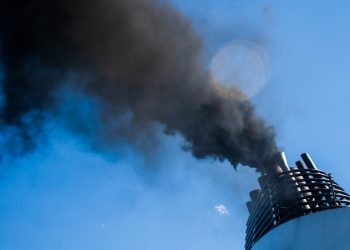IMO is set to discuss measures to “promote consistent implementation of the 0.50% global sulphur limit” that takes effect from the start of 2020, at the forthcoming IMO Sub-Committee on Pollution Prevention and Response (PPR 5), scheduled for February 2018. As already presented in previous PPR, a possible ban carriage of high sulphur fuel ships without scrubbers has been placed on IMO’s agenda.
MARPOL Annex VI does not ban a ship from carrying high sulphur fuel oil (HSFO); it only regulates sulphur oxide (SOx) emissions which have to be met either through using low sulphur fuel or cleaning SOx out of the exhaust gas. Although from that date, a ship will be required to bunker fuel with 0.50% sulphur limit, it is no clear what a ship could do in case there is no availability in its bunkering port at the time. IBIA notes that MARPOL Annex VI successful enforcement from 2020, raises few questions.
With respect to this, the subject is put under the microscope for discussion on IMO PPR 5 Sub-Committee in an effort to “promote consistent implementation of the 0.50% global sulphur limit” that takes effect from the start of 2020. During the previous IMO PPR, in January 2017, a proposal for introducing a ban on the carriage of high sulphur fuel oil (HSFO) as bunkers on ships without scrubbers was briefly discussed.
Regulatory Background
Norway suggested to PPR 4 (January 2017) that the Sub-Committee should consider “a specific prohibition” to carry bunkers exceeding 0.50% sulphur right away, and intends to bring a more detailed proposal to PPR 5 in the hope of introducing a carriage-ban as soon as possible.
IBIA presented a suite of proposals to PPR 4 regarding implementation of the 0.50% sulphur limit in 2020, including this paragraph:
“It is already within the powers of PSCOs to enforce compliance within their coastal waters to ensure the coastal State is reaping the air quality benefits of the regulation. Should evidence emerge that implementation is uneven, measures to enhance more universal compliance may be considered, for example by making it an offence under the regulation for a ship to carry fuels above 0.50% sulphur unless that ship has approved alternative compliance methods installed, or a valid exemption.”
A carriage ban on HSFO as bunkers for ships without valid exemptions could make it easier to enforce the global sulphur cap as this can be detected in port, either by document check or by sampling and analysis of the fuel oil.
Challenges ahead
However, an article published on IBIA’s website mentions that it is not clear yet how this proposal could be written into the regulation, as it would require changes to MARPOL Annex VI and this usually requires MEPC to specifically approve a “new output” to amend the regulation.
As stated, the question is whether most IMO member states believe the existing regulatory framework is sufficient to ensure that ships comply with the applicable sulphur limits, or whether they believe it is necessary to enhance the ability of PSCOs to take action against non-compliance occurring in international waters, which is currently the responsibility of the flag State.
‘Furthermore, if a HSFO carriage ban is agreed on, there are other considerations too. EGCS is not the only technology solution; other technology solutions may emerge that involves either blending HSFO with very low sulphur fuels onboard, or ship-based desulphurisation. In fact, one company has informed IBIA that it is developing a ship-based desulphurisation unit.































































